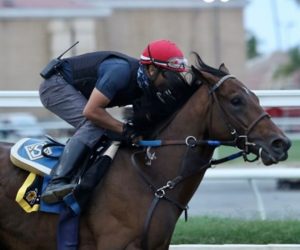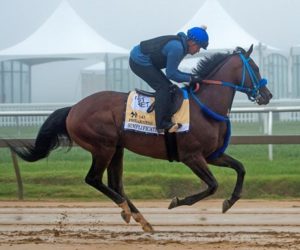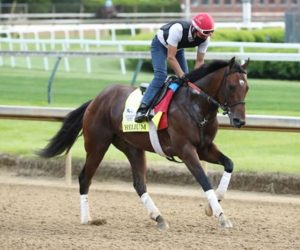Non-American horse racing interests have long coveted the greatest prize in US racing, the Kentucky Derby. The question of who has the fastest horse — in this instance a three-year-old — is many hundreds of years old and has no national boundaries.

In 2012, a specific framework was created establishing a point system qualifying horses for entry into the starting gate on Derby Day — the top 20 point getters having priority the first Saturday in May. One the new system’s shortcomings was the necessity of foreign-based horses to race in the US, if seeking to earn enough points to enter the race.
Beginning in 2017, a Japan Road to the Kentucky Derby was created establishing a specific framework for Japanese-raced horses to make the Derby starting gate. Last year, a European Road to the Kentucky Derby was created to allow runners based in Europe and/or Dubai to earn points. In each of these new roads to the Derby, the points leader is guaranteed a spot in the race. If unable to make the race, the second and then third points getter is offered the single place in the starting gate.
Opening for Foreign Horses
Because the Kentucky Derby is limited to 20 starters, these new tweaks to the points system are designed to help carve out a path for such a horse to enter the race. It could mean a foreign horse might pry away a spot from one of the US’s top 20 point getters, if its connections choose to enter the race. So far, this has not happened.
For such a non-American horse to win the Derby, challenges to overcome include:
- the preponderance of European races being run on grass or a synthetic surface other than dirt, the Kentucky Derby surface
- shipping horses to the US requires the animals to go through a quarantine period and adjust to an overseas time zone, as equine jet lag is real
- the two non-US paths to the Derby are fewer in number and stretch out over a long period of time, making it more difficult for a top horse to maintain conditioning for the race
For a complete listing of the Kentucky Derby points races, including routes that run through Japan and Europe, click here.
Canonero II Shows What Can Be Done
No foreign-based horse has won the 1 1/4 mile Kentucky Derby since Canonero II in 1971 — paying $19.40 for $2.00 to his backers. The Venezuelan-owned and raced champion followed up that upset victory with a win in the Preakness Stakes two weeks later. However, Canonero II finished a well-beaten fourth to Pass Catcher in the Belmont Stakes. It was a nearly 5-length defeat attributed to a sore foot. A Triple Crown would have to wait for Secretariat, two years later.
Canonero II’s Derby derring-do as appearing in the Encyclopedia Britannica:
“Canonero II was in 18th place at the far turn when his jockey, Gustavo Ãvila, let him loose. From the back of the pack he galloped relentlessly, catching the pack and then thundering past the leaders for a three-and-three-quarter-length victory, which was widely deemed a fluke.”
Although, a foreign-based runner has not won America’s greatest race since Canonero II, the possibility remains that it could happen again. Churchill Downs, the owner and presenter of the Kentucky Derby, remains anxious to have a foreign runner(s) enter the race to attract greater worldwide interest and generate more international revenue through wagering on the race.
Gronk Drops the Ball?
The past few decades have produced some Derby contenders, either bred in the US and racing abroad, or foreign-bred and foreign-raced. One of them, Gronkowski was expected to contend last year, but a hoof injury derailed the British-based runner named after the popular New England Patriot’s receiver.
Some adjustments have been made in this, the second year the top points earner in the race sequence on the European Road to the Kentucky Derby and the third year for the Japan road to the Kentucky Derby.
In 2019, the new Cardinal Condition Stakes is set for April 11 at a mile on the synthetic track at England’s Chelmsford City Racecourse. It replaces the Burradon at Newcastle as the seventh and final race of the European sequence.
In Japan, a fourth race has now been added to the series that culminates in the 1 1/8 mile Fukuyru Stakes on March 31 at Nakayama Race Course. Two Japan-based horses have run in the Kentucky Derby: Ski Captain (14th in 1995) and Lani (ninth in 2016).
Remembering Arazi
Numerous European horses have attempted to win the Kentucky Derby but have fallen short.
Among the most notable, Arazi, was the winner of six of seven turf races in France before shipping to Churchill Downs to win the 1991 Breeders’ Cup Juvenile:
Race fans remember Arazi’s spectacular style, which featured an eye-popping burst of speed in the backstretch for his first start ever on dirt.
By the time the 1992 Derby arrived, he was one of the most hyped horses in the Run for the Roses ever. But he disappointed many bettors, finishing a shocking eighth place, losing to Lil E. Tee, an 18/1 longshot.











